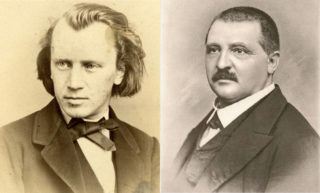Fairy Tales
Sinfonieorchester Basel
22 and 23 November 2017
Javier Perianes, Piano
Soyoung Yoon, Violin
Michal Nesterowicz, Conductor
Stanislaw Moniuszko - Bajka
Camille Saint-Saëns - Concert for Piano and Orchestra No. 5
Nikolai Rimski-Korsakov - Sheherazade
This month, the SOB plays a traditional program (overture, concerto, symphonic piece) that offers ample opportunity to immerse oneself into the illusional world of fairy tales. It opens with a fantasy overture by the Polish-Lithuanian romantic composer Stanislaw Moniusko whose fame now barely reaches outside Poland and Lithuania, but who, in his own day, was successful all the way from Paris to Saint Petersburg. His compositions, including Bajka, which means fairy tale, are full of references to Polish dances (such as the Mazurka and the Polonaise) and the librettos of his operas often have a nationalistic character.
Bajka sets the tone for the main piece of the program, Rimsky-Korsakov’s Sheherazade. This symphonic suite musically recounts the tales Sheherazade told Sultan Schariar over the course of 1001 nights in order to postpone her own execution and to stop the Sultan’s cruel practice of assassinating each one of his many brides.
Sheherazade is personified by a lyrical melody, played by the principal violin, right after the first bars introducing Schariar’s theme. It takes little effort to imagine the beautiful sultana drifting through the aisles of the opulent palace on her way to the sultan’s bedroom to whisper a new fairy tale into his lascivious ear. As the piece draws to a close the antagonistic themes return; this time not subsequently but simultaneously and reconciling: the sultan repenting, the sultana finally finding her salvation and peace.
The musical form of Sheherazade is a suite, originally a set of dances, later, more generally, developed into an arranged set of instrumental or orchestral pieces. Hence it was very suitable for programmatic music. Because Rimsky wanted the audience to freely associate with the orientally inspired music, he later dropped the titles of the movements, but from the earlier edition still available to us, we know that Rimsky kept them sufficiently vague to give the listener a chance to let the imagination flow.
The oriental inspiration of Rimsky’s suite and the nationalistic and folkloristic idiom of Moniuszko’s overture are bridged by Saint-Saëns’s 5th piano concerto, which is, somewhat misleadingly, known as The Egyptian. The structure of the piece is traditional (three parts of which the middle one is slow), but the musical material is exotic with influences from the Middle East, Spain and Java (gamelan), most audible in the second movement. The Egyptian affect is clearest in the second movement, in which Saint-Saëns incorporated a Nubian lovesong he heard on a boat trip on the Nile during one of his frequent winter trips to Luxor where he composed the concerto.
The entire work is a rendition of a sea voyage, a possible link to Sindbad’s travels, which gives the program even more cohesion. The sea is most apparent in the undulating melody of the orchestra at the start of the first movement. The low, virtuoso theme at the onset of the last movement depicts a boat’s roaring engines and returns later on with greater intensity as if fighting the wind and the waves.
Just like Sheherazade kept the evil king under her spell by telling him her fairy tales, the music on tonight’s program, with its myriad of illustrative and colorful details, will mesmerize you from beginning to end.
These English Program Notes have been published in the magazine of the Sinfonieorchester Basel (No.4, 2017/2018)








Comments